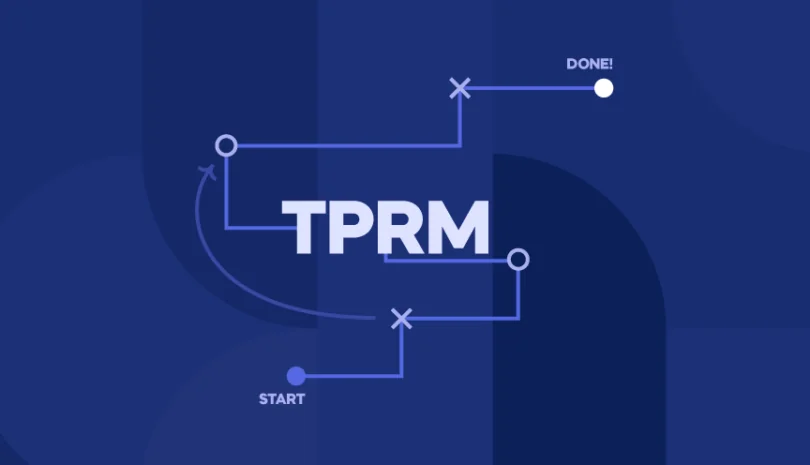The need for transparency has evolved from a request into an expectation. Customers, partners, regulators, and internal teams now require clear visibility into how organizations manage security, privacy, and compliance. During vendor reviews and third-party risk assessments, a company’s ability to communicate this effectively can directly influence trust, speed, and outcomes.
A Trust Center offers a modern approach. It serves as a centralized, self-serve destination where organizations share verified, real-time information about their risk posture. More than just a resource page, it demonstrates operational maturity and reduces the friction that often slows down due diligence.
In this article, we’ll explore what a Trust Center is, why it matters across industries, what it should include, and how tools designed for third-party risk management like customizable, shareable profiles, can help streamline the process for security, legal, and procurement teams alike.
Understanding Trust Centers
A Trust Center is a publicly accessible digital hub that centralizes an organization’s most important security, privacy, compliance, and operational information. It brings together materials that are often spread across teams or buried in internal systems, making them easily accessible to stakeholders who need to evaluate your risk posture.
More than a document repository or FAQ page, a Trust Center is designed for transparency and efficiency. It answers common due diligence questions upfront, showcases regulatory alignment, and signals that your organization operates with a mature, structured approach to risk management.
Stakeholders such as procurement teams, auditors, legal counsel, and IT leaders can review your policies, certifications, and security documentation without sending individual requests or waiting for manual responses.
When thoughtfully implemented, a Trust Center becomes a real-time reflection of your company’s readiness. It reduces back-and-forth communication, accelerates decision-making, and helps build confidence across every stage of the business relationship.
Why Every Organization Needs a Trust Center
Trust Centers are no longer reserved for large enterprises. They’ve become essential for any organization that handles sensitive data, operates in a regulated industry, or engages in third-party risk assessments. As expectations around transparency increase, so does the need for a centralized way to share critical information.
A well-structured Trust Center helps organizations:
- Faster sales cycles. A Trust Center helps buyers move more quickly by giving them the information they need without requesting it manually.
- Improved stakeholder confidence. When customers and partners see evidence of your security maturity upfront, they’re more likely to trust your systems and processes.
- Stronger risk management posture. A Trust Center reflects that your organization has formalized and documented its security and compliance practices.
- Simplified third-party due diligence. Procurement teams and risk assessors often have similar baseline requirements. Publishing those materials proactively reduces repetitive work.
- Better collaboration across internal teams. Legal, security, sales, and leadership can align on a shared, standardized set of disclosures, reducing inconsistency and rework.
- Regulatory transparency. Publishing policies and documentation demonstrates readiness for audits and ongoing compliance reviews.
Trust Centers offer a clear return on investment by turning complex, manual processes into repeatable, scalable workflows.
Essential Components of an Effective Trust Center
A well-designed Trust Center should deliver a clear, comprehensive, and accessible view of your organization’s security and compliance posture. It needs to be easy for stakeholders to navigate, with content that addresses common questions and satisfies due diligence requirements without overwhelming the reader.
The most effective Trust Centers include the following components:
- Policies and Frameworks. Link to internal security policies and reference the industry frameworks your organization aligns with, such as ISO 27001, NIST CSF, or CIS Controls. This helps establish your overall approach to governance and risk management.
- Certifications and Attestations. Showcase third-party validations like SOC 2, ISO 27001, PCI-DSS, or GDPR readiness documentation. These build credibility and support faster evaluations.
- Data Protection and Privacy. Publish your privacy policy, explain how personal data is handled, and highlight adherence to relevant regulations (GDPR, CCPA).
- Incident Response and SLAs. Summarize your incident response process, including escalation paths and any applicable uptime or service-level guarantees.
- Penetration Testing and Vulnerability Management. Include summaries or attestations from recent third-party tests or vulnerability scans to validate your technical controls.
- FAQs and Interactive Q&A. Answer frequently asked questions using clear, non-technical language. Format responses to match procurement and compliance queries.
- Downloads and Resources. Offer supporting materials such as whitepapers, certifications, one-pagers, or security overview decks.
A strong Trust Center should be easy to update, free from jargon, and designed to support both technical and non-technical audiences.
Best Practices for Structuring Your Trust Center
A Trust Center is only effective if stakeholders can easily navigate it and find relevant information quickly. To ensure long-term value, your Trust Center should be thoughtfully structured and actively maintained. Here are five best practices to guide your approach:
- Keep it updated. Security and compliance information evolves. Review and refresh your Trust Center regularly—especially after audits, certifications, or policy changes—to ensure accuracy.
- Use clear, non-technical language. Your audience will likely include both technical and non-technical stakeholders. Avoid jargon and explain concepts in plain, accessible terms.
- Include downloadable documents. Provide downloadable versions of key materials, such as SOC 2 reports, ISO certifications, security one-pagers, or whitepapers. This helps stakeholders evaluate your posture without needing to reach out directly.
- Integrate system status and calendars. If relevant, embed uptime indicators or compliance calendars to demonstrate operational reliability and planning.
- Enable self-service. Allow visitors to access NDAs, data processing agreements (DPAs), and other trust-related documents without requiring manual intervention from your team.
A well-structured Trust Center reflects a company’s commitment to transparency and preparedness. It builds trust, streamlines communication, and reinforces the professionalism of your brand at every interaction.
Maintaining and Evolving Your Trust Center
Launching a Trust Center is an important milestone, but keeping it accurate and relevant over time is what builds long-term trust. A static or outdated Trust Center can lead to confusion, create doubt among stakeholders, and undermine the very transparency it’s meant to support.
To maintain its effectiveness, organizations should establish a regular update cadence, quarterly is often ideal, or revisit content after key events like audits, leadership changes, or new certifications. Assigning clear ownership is equally important. Whether it’s a dedicated security lead, legal stakeholder, or cross-functional team, someone needs to be responsible for reviewing content and managing approvals.
It’s also valuable to monitor how the Trust Center is being used. Analytics can reveal which documents are downloaded most often and where visitors are spending time. This data helps inform what to prioritize and improve. Gathering direct feedback from prospects or partners adds another layer of insight, highlighting what’s working and what’s missing.
Ultimately, a Trust Center is not a one-time deliverable, it’s a living resource. When thoughtfully maintained, it becomes a clear signal of your organization’s commitment to transparency, operational excellence, and trustworthiness.
Introducing Panorays Trust Center: Your Customizable and Shareable Trust Solution
For many organizations, the hardest part of building a Trust Center isn’t deciding what to include, it’s finding the time, resources, and tools to actually create one. That’s where Panorays’ Trust Center comes in.
Our Trust Center is a free, customizable solution that makes it easy to centralize and share your organization’s key security, privacy, and compliance information. It removes the need for web development, design work, or long implementation timelines. You can generate your Passport in minutes and begin sharing it with prospects, customers, and auditors right away.
The platform is designed to streamline security reviews and reduce repetitive work. By proactively sharing documentation and answers to common due diligence questions, teams can cut their manual workload by up to 80 percent. Security Passport also gives you dynamic control: update content at any time, track engagement, and decide who can access your information. With optional NDA protection, sensitive details remain secure.
Whether you’re navigating a procurement review or accelerating a sales cycle, Security Passport helps your organization build trust faster, turning what was once a resource-intensive task into a strategic asset.
Trust Center Solutions
A Trust Center like Security Passport is more than a documentation hub. It’s a strategic tool that helps unify your security narrative, improve cross-functional collaboration, and accelerate due diligence across sales, procurement, and compliance workflows.
To build an effective Trust Center, start with the basics:
- Identify key documents and certifications your stakeholders frequently request
- Create a single, structured profile that’s easy to navigate
- Decide which materials should be public and which require NDA protection
- Establish a routine for updating content after audits or policy changes
- Track engagement to see which resources matter most to your audience
Security Passport streamlines every step of this process. It removes technical barriers and gives you full control over how, when, and with whom your information is shared. For organizations looking to reduce friction and respond faster to risk assessments, Security Passport is the fastest way to launch a high-impact Trust Center.
Trust Center FAQs
-
A Trust Center should include your security policies, certifications, privacy documentation, audit summaries, and answers to frequently asked questions. It may also include penetration test summaries, SLAs, incident response plans, and downloadable compliance resources. The goal is to proactively share what customers and partners would otherwise need to request.
-
No. Any organization that handles sensitive data, works with partners, or undergoes vendor reviews can benefit from a Trust Center. Small and mid-sized companies often see even more value, as it reduces the strain on lean security and legal teams.
-
It can be. Some organizations choose to make their Trust Center fully public, while others restrict access or require NDAs for certain materials. With Panorays’ Security Passport, you can control access on a per-link basis and track who views your content.



